Why Cycling Supplements May Improve Long-Term Resilience
🌱 Introduction: The Problem with “Always On” Supplementation
You start a new supplement routine.
The first few weeks? Energy rises. Sleep improves. Focus returns.
Then—slowly—it flatlines. The same stack that once gave you balance or calm suddenly feels… average.
That’s not your imagination. It’s your body adapting.
In the world of supplements, cycling—taking structured breaks or rotating formulas—can be the key to keeping your results sustainable and your stress resilience strong for the long haul.
This isn’t about using more supplements. It’s about using them smarter.
In this guide, we’ll explore:
⚙️ Why the body adapts to consistent inputs
🧠 How supplement cycling prevents tolerance and dependency
🌿 The best supplements to cycle for stress, focus, and energy
⏰ How to design a cycling schedule that enhances long-term resilience
Looking for supplements for This? Click here.
🧬 Part 1: Understanding Biological Adaptation
⚡ Homeostasis — The Body’s Balancing Act
Your body’s primary goal is balance — what scientists call homeostasis.
Every time you introduce a new supplement, nutrient, or herb, the body adjusts to maintain that balance.
For example:
Take caffeine daily → the brain downregulates adenosine receptors.
Take adaptogens long-term → the adrenal system stabilizes at a new “set point.”
At first, supplements shift your physiology. But the longer you use them, the more your body compensates — reducing their effect.
This is called biological accommodation, and it’s one of the main reasons cycling works.
🔄 The Stress Adaptation Paradox
Stress resilience works like exercise.
A little challenge strengthens you — too much burns you out.
Similarly, supplements that support resilience (like Rhodiola, Ashwagandha, or L-Tyrosine) are most effective when used intermittently, allowing the body’s adaptive mechanisms to reset.
Overuse can lead to what biohackers call “diminishing returns.”
Cycling maintains that sweet spot — enough stimulation for adaptation, not enough for exhaustion.
🌿 Part 2: The Physiology of Supplement Cycling

🧠 Neurochemical Balance
Many nootropics and adaptogens influence neurotransmitters — dopamine, serotonin, GABA, acetylcholine.
When used continuously, the brain may adjust receptor sensitivity or downregulate enzyme activity.
That’s why some people feel that after a month, their focus stack doesn’t “hit” the same way.
Cycling allows neurotransmitter systems to rebound naturally, preserving their responsiveness.
⚙️ Endocrine (Hormonal) Adaptation
Adaptogens and stress-supporting herbs often influence cortisol and adrenal function.
Prolonged use can blunt their impact if the system stops perceiving them as “novel.”
Cycling reintroduces variety — signaling the body to re-engage its adaptive machinery.
💪 Mitochondrial Recovery
Energy-enhancing supplements (CoQ10, Rhodiola, PQQ, Cordyceps) support mitochondrial performance.
However, consistent stimulation without breaks can increase oxidative stress.
Strategic off-cycles give cells time to repair and consolidate benefits.
🌸 Part 3: The Benefits of Cycling for Long-Term Resilience
💡 1️⃣ Preventing Tolerance
Your body builds tolerance to frequent chemical stimuli — from caffeine to L-theanine.
Taking 2–7 days off periodically resets receptor sensitivity.
This keeps your resilience supplements effective for years, not just weeks.
🌿 2️⃣ Supporting Natural Rhythms
Your endocrine and nervous systems function in cycles — circadian, ultradian, monthly.
Cycling supplements sync with this rhythm instead of overriding it, promoting biological intelligence rather than dependency.
🧠 3️⃣ Reducing Side Effects
Even natural compounds can accumulate or shift balance when used constantly (e.g., adaptogens lowering cortisol too much, or nootropics overstimulating dopamine).
Cycling helps you avoid these long-term imbalances.
⚖️ 4️⃣ Encouraging Self-Awareness
Periodic breaks let you retest your baseline:
“How do I actually feel without this supplement?”
You might notice which effects are sustainable and which depend on continued use — empowering smarter, personalized stacking.
🌿 5️⃣ Building Adaptive Capacity
Resilience isn’t just about calm — it’s about flexibility.
Cycling trains your physiology to adjust, recover, and respond more dynamically.
That’s true resilience: the ability to rebound stronger each time you reset.
🧩 Part 4: Which Supplements Should You Cycle?
Not all supplements need cycling.
Below is a categorized list showing which benefit most from strategic breaks.
Looking for supplements for This? Click here.
🌿 Adaptogens (Yes — Cycle)
| Supplement | Use Period | Off Period | Reason |
|---|---|---|---|
| Ashwagandha | 8–12 weeks | 2–4 weeks | Regulates cortisol; cycling prevents overadaptation |
| Rhodiola | 6–8 weeks | 2 weeks | Stimulating; avoids energy plateau |
| Ginseng | 6 weeks | 2–3 weeks | Avoids receptor fatigue |
| Schisandra | 8–10 weeks | 2 weeks | Liver support; promotes sustained response |
| Eleuthero | 8 weeks | 2 weeks | Maintains adrenal sensitivity |
💊 Nootropics (Yes — Cycle)
| Supplement | Use Period | Off Period | Reason |
|---|---|---|---|
| L-Tyrosine | 5 days | 2 days | Dopamine precursor; prevents overstimulation |
| Alpha-GPC | 4–6 weeks | 1–2 weeks | Maintains acetylcholine receptor sensitivity |
| Caffeine | 4–6 weeks | 1 week | Resets adenosine receptors |
| Lion’s Mane | 3 months | 1 month | Avoids desensitization of neurogenesis response |
🍄 Mitochondrial & Energy Boosters (Cycle Occasionally)
| Supplement | Use Period | Off Period | Reason |
|---|---|---|---|
| Rhodiola | 8 weeks | 2 weeks | Restores energy response |
| PQQ | 2 months | 2 weeks | Avoids oxidative buildup |
| CoQ10 | Continuous | Optional | Safe for long-term, but cycling every few months may enhance efficacy |
| Cordyceps | 8 weeks | 2 weeks | Prevents overactivation of ATP pathways |
🌙 Sleep & Relaxation Support (Cycle or Rotate)
| Supplement | Use Period | Off Period | Reason |
|---|---|---|---|
| Magnesium | Continuous | — | Safe daily |
| Glycine | Continuous | — | Non-habit forming |
| L-Theanine | Continuous or 5:2 | Keeps GABA receptors responsive | |
| GABA | 5 days | 2 days | Prevents downregulation |
| Valerian | 4 weeks | 2 weeks | Avoid tolerance buildup |
💪 Immune & Inflammatory Support (Rotate, Not Stop)
| Supplement | Use Period | Off Period | Reason |
|---|---|---|---|
| Curcumin | 2–3 months | 2 weeks | Avoids gut desensitization |
| Omega-3s | Continuous | Optional | Safe long-term |
| Vitamin D | Continuous | Review every 6 months | Depends on serum levels |
| Probiotics | 2–3 months | 1 month | Prevents strain dependency |
🧠 Part 5: How to Create Your Own Cycling Schedule
A well-designed cycle plan aligns with your biological rhythm, goals, and lifestyle.
Here’s a template to start:
🗓️ Step 1: Define Your Goals
Ask yourself:
Do I want more energy, focus, or stress tolerance?
Am I using stimulating or calming supplements?
How long have I been on this stack?
⚖️ Step 2: Classify by Mechanism
Group your supplements by system:
Nervous system: L-theanine, L-tyrosine, Alpha-GPC
Hormonal/adrenal: Ashwagandha, Rhodiola, Eleuthero
Metabolic/mitochondrial: CoQ10, Cordyceps, PQQ
Restorative: Reishi, Glycine, Magnesium
This helps you see overlap — and where to rotate rather than stack redundantly.
🔄 Step 3: Apply 3 Simple Cycling Rules
1️⃣ Stimulating compounds → use 5 days on / 2 off, or 8 weeks on / 2 off.
2️⃣ Restorative adaptogens → use 8–12 weeks on / 2–4 off.
3️⃣ Daily essentials (magnesium, omega-3, vitamin D) → continue year-round.
🧭 Step 4: Use Biofeedback
Track how your body reacts across cycles:
Energy and mood stability
Sleep quality
Recovery speed
HRV (Heart Rate Variability)
Use journaling or an HRV app (like Elite HRV or Whoop) to track patterns.
If HRV drops or sleep worsens during a stack, it’s time to pause.
🌙 Step 5: Use the Off-Cycle Wisely
Don’t think of off-cycles as “downtime.”
They’re integration periods for your body to consolidate benefits.
During breaks, focus on:
Hydration + electrolytes
Sleep optimization
Light movement and breathing exercises
Mindfulness or journaling
You’re training your body to thrive without chemical support.
🌿 Part 6: Stacking + Cycling for Long-Term Adaptation
Cycling doesn’t mean abandoning your stacks — it means alternating intelligently.
Example: The Resilience Stack (8 Weeks)
| Time of Day | Supplement | Duration | Goal |
|---|---|---|---|
| Morning | Rhodiola (300 mg) | 8 weeks | Energy & focus |
| Morning | L-Theanine (200 mg) | Continuous | Calm clarity |
| Midday | Ashwagandha (300 mg) | 8 weeks | Stress regulation |
| Evening | Magnesium Glycinate (300 mg) | Continuous | Recovery |
Cycle off Rhodiola + Ashwagandha for 2–3 weeks every cycle.
Continue L-theanine and magnesium year-round.
Result: Your system stays responsive, calm, and strong.
Looking for supplements for This? Click here.
Example: The Focus & Flow Stack (6 Weeks On / 2 Off)
| Supplement | Mechanism | Goal |
|---|---|---|
| Alpha-GPC | Acetylcholine | Deep focus |
| L-Tyrosine | Dopamine | Motivation |
| Omega-3 | Neural resilience | Long-term brain support |
| Bacopa | Serotonin + memory | Cognitive balance |
Cycle Alpha-GPC + L-Tyrosine (6 weeks on / 2 off).
Keep Omega-3 + Bacopa as anchors.
This combination prevents dopamine burnout and supports sustainable creativity.
🧘 Part 7: The Role of Adaptation in Resilience

Resilience doesn’t mean resisting change — it means adapting well to it.
The same applies to supplementation.
When you cycle, you mimic how nature works:
Seasons change 🌞🌧️
Hormones fluctuate 📉📈
Energy waxes and wanes
By aligning supplementation with these rhythms, you teach your body flexibility — the biological definition of resilience.
Cycling becomes a rhythm of stimulate → rest → recover → grow stronger.
⚗️ Part 8: The Science of Longevity Through Cycling
Chronic overuse of any adaptive compound can lead to habituation or allostatic load — the wear-and-tear of constant adaptation.
Studies on adaptogens like Rhodiola and Ashwagandha show that intermittent use maintains their cortisol-regulating and fatigue-fighting effects longer than continuous dosing.
Similarly, mitochondrial support compounds like CoQ10 and PQQ show enhanced efficiency when alternated, allowing redox systems to recalibrate.
Cycling works not because the supplements are “losing power” — but because your body learns to self-regulate.
🌿 Part 9: Psychological Benefits of Cycling
Supplement cycling also strengthens mental resilience.
When you voluntarily step back from something beneficial, you practice detachment and discipline — two traits central to emotional balance.
It reinforces that supplements are tools, not crutches.
Your strength doesn’t come from a capsule — it comes from the consistency of your awareness, habits, and recovery.
🧘 Part 10: Integrating with Lifestyle
To maximize long-term resilience, pair cycling with:
🧘 Breathwork to regulate stress physiology
Want to try Breathwork? Click Here.
💤 Sleep hygiene for hormonal restoration
🧠 Mindful breaks to balance dopamine
Looking for online therapy ? Click Here.
🥗 Nutrient-dense meals to support off-cycles
The more your lifestyle supports recovery, the fewer external supports you’ll need over time.
🌈 Conclusion: Flexibility Is the New Strength
Supplement cycling is more than a biohacking trick — it’s a reflection of biological intelligence.
It teaches your body how to adapt, your brain how to reset, and your mindset how to stay balanced through change.
Because resilience isn’t about being invincible —
it’s about being flexible, responsive, and self-renewing.
By cycling supplements, you align with nature’s core principle:
Growth happens in cycles, not straight lines. 🌿
📚 References
Panossian, A. “Adaptogens and Non-Specific Stress Resistance.” Phytomedicine, 2021.
Sarris, J. “Nutritional Psychiatry and Stress Management.” World Journal of Psychiatry, 2019.
McEwen, B. “Allostatic Load and Adaptation.” Annual Review of Neuroscience, 2007.
Walker, M. Why We Sleep. Scribner, 2017.
Kennedy, D. et al. “Herbal Nootropics and Neurochemical Regulation.” Nutritional Neuroscience, 2020.
Huberman, A. “Tools for Resilience and Recovery.” Huberman Lab Podcast, 2023.
Peuhkuri, K. “Diet, Adaptation, and Stress Hormones.” Nutrients, 2012.
Tedeschi, R. & Calhoun, L. “Post-Traumatic Growth Theory.” Psychological Inquiry, 2004.
Brekhman, I. “Adaptogens in Stress Protection.” Annual Review of Pharmacology, 1969.
Panossian, A. & Wikman, G. “Phytotherapy of Stress-Related Disorders.” Current Clinical Pharmacology, 2010.
Related Posts
-

How to Measure Your Emotional Growth Over Time
Emotional growth can’t be measured on a scale — but it can be tracked through awareness, regulation, and reflection. Learn how to monitor your emotional evolution using journaling, biofeedback, and science-backed metrics for real progress. 💫
-

The Connection Between Creativity and Resilience
Creativity and resilience share the same roots — adaptability, flexibility, and imagination. Learn how creative expression rewires your brain for strength, helping you transform stress into growth through neuroscience, art, and self-reflection. 🌿
-

The Role of Biofeedback in Emotional Strength
Learn how biofeedback bridges mind and body — helping you monitor heart rate, breath, and brain activity to build emotional strength, resilience, and calm under pressure. See how science meets mindfulness for lasting control. 🌿
-

How to Stay Strong During Long-Term Stress
Long-term stress doesn’t just drain your energy — it rewires your biology. Discover science-backed ways to strengthen your body, balance your mind, and build lasting resilience through breathwork, nutrition, mindset shifts, and supplements that restore calm and focus. 💪
-

Resilience Training for Entrepreneurs
Entrepreneurship isn’t just about strategy — it’s about stamina. Discover how resilience training helps founders stay calm, clear-headed, and adaptable under pressure through neuroscience-backed habits, emotional regulation, and smart supplementation. 🌿
-

How Nootropics Can Boost Emotional Control
Emotions don’t have to control you. Discover how nootropics like L-theanine, ashwagandha, saffron, and omega-3s help balance brain chemistry, improve focus, and strengthen your ability to stay calm and composed under stress. 🌿
-

Stacking Adaptogens for Maximum Resilience
Adaptogens are nature’s stress shield — helping you stay calm, energized, and clear even under pressure. Learn how to stack herbs like ashwagandha, rhodiola, reishi, and schisandra for maximum resilience, balance, and long-term vitality. 🌿
-
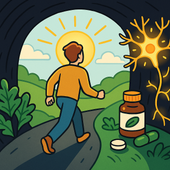
Post-Traumatic Growth and Supplements That Support It
After trauma, true healing means more than survival — it’s transformation. Learn how post-traumatic growth happens in the brain and body, and explore natural supplements like magnesium, ashwagandha, saffron, and omega-3s that support resilience, clarity, and emotional repair.
-

How to Regain Focus After Emotional Stress
After emotional stress, your nervous system feels frayed — your focus fades, thoughts race, and calm seems impossible. Learn how to restore balance, rebuild concentration, and retrain your brain for clarity and peace through evidence-based mind–body tools. 🌿
-
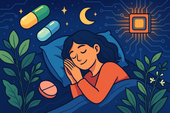
The Future of Sleep Supplements
The future of sleep supplements is here — where science meets nature. Discover how next-generation formulas use adaptogens, amino acids, and biotech innovations to support deep, restorative sleep without dependency. 🌙
-
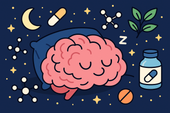
Emerging Research on Sleep and Nootropics
Can nootropics help you sleep better? Discover how compounds like L-theanine, magnesium threonate, ashwagandha, and Alpha-GPC influence neurotransmitters, circadian rhythm, and brain recovery — bridging the gap between smarter days and deeper nights. 🌙
-

New Herbal Extracts for Deep Sleep
Discover the next generation of herbal extracts for deep sleep — from saffron and magnolia to jujube and lemon balm. Learn how these plant-based compounds calm the nervous system, balance cortisol, and promote truly restorative rest. 🌙
-
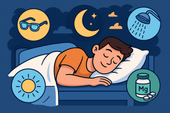
Sleep Biohacking: What Works and What Doesn’t
Biohacking your sleep can sound futuristic — from red light therapy to wearables and supplement stacks. But which hacks actually help, and which are just hype? Discover the science-backed sleep strategies that truly improve rest, recovery, and brain health. 🌙
-
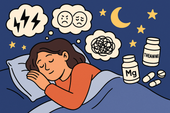
Sleep Support for People with Anxiety Disorders
💭 A restless mind can keep you up all night — thoughts spinning, heart racing, and peace feeling far away. Learn how to quiet overthinking, regulate your nervous system, and create a nightly ritual that teaches your brain to let go and rest deeply. 🌙
-
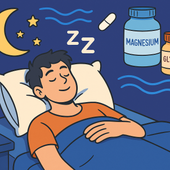
How to Fall Back Asleep After Waking Up
Waking up in the middle of the night? Learn how to fall back asleep quickly and calmly using breathing techniques, stress-reducing rituals, and natural supplements like magnesium and glycine. Restore your body’s rhythm and wake up feeling refreshed.
-
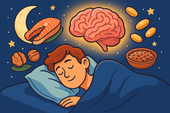
The Role of Omega-3s in Sleep Quality
-
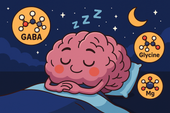
Stacking GABA and Glycine for Deeper Rest
Discover how stacking GABA and glycine can help you achieve deeper, more restorative sleep. Learn how these calming amino acids work together to relax your mind, soothe your body, and improve overall sleep quality—naturally and safely.
-

Overcoming Jet Lag with Supplements
✈️ Jet lag doesn’t have to ruin your trip! Discover how supplements like melatonin, magnesium, L-theanine, and tart cherry can help you reset your body clock faster, reduce fatigue, and recover energy naturally after long flights. 🌙
-

Managing Sleep During Times of Stress
Feeling wired and restless? Learn how to manage sleep during stressful times through nutrition, breathwork, and natural supplements like magnesium and L-theanine. Discover how to calm your nervous system and restore deep, peaceful rest—even when life feels overwhelming.
-

The Role of Magnesium for Night Cramps
Night cramps keeping you awake? Discover how magnesium helps relax muscles, balance electrolytes, and prevent painful spasms. Learn which forms work best, how to take them, and how to pair them with other nutrients for cramp-free, peaceful sleep.
-
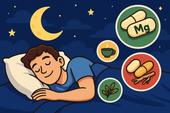
Supplements That Reduce Nighttime Awakenings
🌙 Discover science-backed supplements that help you stay asleep through the night. From magnesium and L-theanine to glycine and ashwagandha, learn how these natural compounds calm your nervous system, balance cortisol, and prevent 2 a.m. wake-ups for deeper, more restorative rest.
-
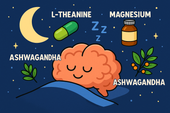
Nootropics That Promote Calm and Rest
Explore the world of calming nootropics — natural brain enhancers that promote relaxation, better focus, and deeper rest. Learn how L-Theanine, magnesium, ashwagandha, and other adaptogens help balance your nervous system, reduce stress, and support restorative sleep.
-
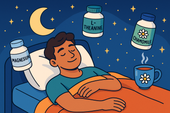
Best Natural Supplement Stack for Sleep
Discover the best natural supplement stack for deep, restorative sleep. Learn how nutrients like magnesium, L-theanine, glycine, and calming herbs such as chamomile and ashwagandha work together to relax your body, calm your mind, and improve sleep quality—naturally and safely.
-
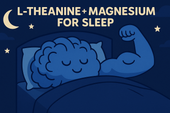
Combining L-Theanine and Magnesium for Sleep: A Calm Night, Naturally
Discover how combining L-Theanine and Magnesium can help you drift into deep, restorative sleep. Learn how this natural duo calms the mind, relaxes the body, and supports your nervous system—without grogginess the next morning.
-
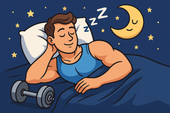
How to Sleep Better After Intense Workouts
Struggling to fall asleep after a tough workout? Learn how to optimize your post-training recovery with nutrition, hydration, and science-backed sleep strategies. Discover how to calm your nervous system, balance hormones, and wake up fully recharged for your next session.
-
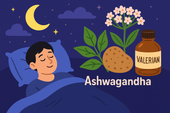
Ashwagandha and Valerian: A Bedtime Combo for Deep Rest and Emotional Reset
Discover the calming synergy of Ashwagandha and Valerian root, two natural sleep aids that help quiet the mind, ease anxiety, and promote deeper rest. Learn how this herbal duo supports the nervous system, balances stress hormones, and restores emotional peace — without next-day grogginess.
-
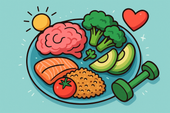
How to Create a Resilience-Boosting Diet
Discover how to build emotional and physical strength from the inside out with a resilience-boosting diet 🍎. Learn which foods stabilize your mood, how supplements like magnesium and omega-3s strengthen your stress response, and why pairing nutrition with breathwork and therapy creates lasting calm, focus, and vitality 🌿💪.
-

Best Teas and Herbal Blends for Calmness: Nature’s Way to Restore Inner Peace
Ashwagandha, the ancient adaptogenic herb, helps your body find balance during stress. Known as “Indian ginseng,” it supports cortisol regulation, boosts energy, and restores calm clarity. Discover how this powerful root promotes resilience, emotional balance, and steady vitality — one cup at a time. 🌸
-

Parenting and Emotional Strength: How to Raise Children Without Losing Yourself
Empathy is the bridge that connects hearts — the quiet power to understand, feel, and support another’s emotions without judgment. Learn how empathy strengthens relationships, enhances communication, and cultivates deeper compassion in everyday life. 🌿
-
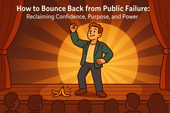
How to Bounce Back from Public Failure: Reclaiming Confidence, Purpose, and Power
Visualization is more than imagination — it’s brain training for resilience. By picturing calm, success, or healing, you activate the same neural pathways as real experience. Learn how daily visualization rewires your brain for confidence, emotional balance, and recovery from stress. ✨
-

Coping with Financial Stress Through Resilience: How to Stay Grounded When Money Feels Tight
Body awareness is the foundation of emotional resilience. By tuning into your body’s signals — tension, fatigue, or calm — you learn to recognize stress before it overwhelms you. Discover how mindfulness, gentle movement, and breathwork can deepen your connection with your body and restore balance from the inside out. 🧘
-

How to Stay Positive During Chronic Illness: A Guide to Emotional Strength and Hope
Creativity is more than art — it’s a form of healing. Whether through painting, writing, music, or small acts of expression, creativity helps release emotion, calm the nervous system, and reconnect you to joy. Discover how to use creativity as a tool for emotional balance, resilience, and self-discovery. 🌿
-
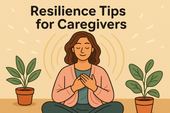
Resilience Tips for Caregivers: How to Stay Strong While Caring for Others
Joy isn’t the absence of pain — it’s the quiet strength to find light even in challenging times. Cultivating joy through small daily moments restores balance, releases stress, and reminds you of life’s beauty. Learn how to reconnect with authentic happiness, rebuild emotional energy, and nurture your nervous system through gratitude, presence, and play. 🌿
-

Building Resilience After a Breakup: How to Heal, Rebuild, and Rise Stronger
Social connection is one of the strongest predictors of emotional resilience. During difficult times, genuine relationships act as anchors — calming the nervous system, reducing stress hormones, and helping you regain perspective. Learn how cultivating real human connection can strengthen your mind, heart, and overall well-being. 🌿
-
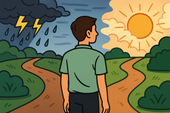
How to Stay Emotionally Strong During Job Loss
Your emotions are powered by brain chemistry — a delicate balance of neurotransmitters like serotonin, dopamine, and cortisol. When these chemicals work in harmony, you feel calm, focused, and resilient. Learn how daily habits, nutrition, and mindfulness can support your brain chemistry and boost emotional well-being naturally. 🌿
-

The Role of Hormones in Emotional Stability: How Your Chemistry Shapes Your Calm
Hormones shape more than your body — they shape your emotions, resilience, and sense of calm. From cortisol to serotonin, these chemical messengers influence how you react to stress, connect with others, and recover from challenges. Learn how to balance your hormones naturally to build lasting emotional stability and harmony within. 💫
-

Mitochondria and Emotional Energy: The Cellular Power Behind Your Mood
Breathwork is one of the most powerful tools for emotional regulation and cellular balance. Through intentional breathing, you can calm your nervous system, increase oxygen flow to the brain, and even support mitochondrial energy. Learn how conscious breathing connects body and mind — transforming stress into presence and emotional strength. 🌿
-

Inflammation and Its Impact on Mood Resilience: The Silent Link Between Body and Mind
Inflammation doesn’t just affect the body — it impacts the mind. Chronic inflammation alters brain chemistry, depletes serotonin, and makes emotional recovery harder. Learn how calming inflammation through nutrition, mindfulness, and sleep can restore balance, resilience, and a renewed sense of emotional strength. 💫
-
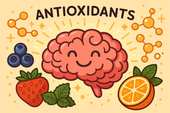
How Antioxidants Protect Emotional Well-being: The Hidden Link Between Oxidative Stress and Mental Health
Antioxidants do more than protect your body — they defend your mind. By neutralizing oxidative stress, antioxidants support serotonin, dopamine, and brain energy pathways that keep you calm, focused, and emotionally balanced. Discover how foods like berries, green tea, and dark chocolate nourish your brain, boost mood, and strengthen resilience from the inside out. 🌿✨
-
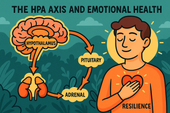
The HPA Axis and Emotional Health: The Hidden Bridge Between Stress and Mind
Neuroplasticity — the brain’s ability to rewire and adapt — is the foundation of emotional healing and resilience. When you face stress, trauma, or change, your neural pathways can reshape themselves to support new patterns of calm, focus, and self-awareness. Learn how daily practices like mindfulness, therapy, and breathwork strengthen neuroplasticity to transform emotional pain into personal growth. 🌸
-
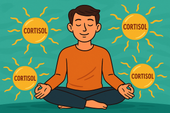
Why Cortisol Control Is Key to Resilience: Mastering Stress to Build Emotional Strength
Controlling cortisol — the body’s main stress hormone — is the secret to lasting resilience. When cortisol levels stay balanced, your mind becomes clearer, emotions steadier, and energy more sustainable. Learn how breathwork, mindset shifts, adaptogens, and daily rhythms can help you calm your stress response and build true inner strength. 🌞💪
-
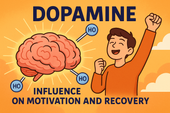
Dopamine’s Influence on Motivation and Recovery: Reigniting Drive and Balance
Healthy relationships are the foundation of emotional balance and resilience. Whether romantic, familial, or platonic, genuine connection releases dopamine, serotonin, and oxytocin — the brain’s “bonding trio” — helping us feel secure, motivated, and seen. Learn how trust, empathy, and communication not only strengthen your connections but also reshape your nervous system for deeper emotional well-being. 🌿🤝
-
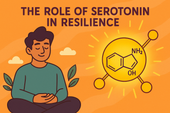
The Role of Serotonin in Resilience: How This “Mood Molecule” Shapes Emotional Strength
Serotonin — often called the “resilience molecule” — plays a vital role in how we handle stress, regulate mood, and recover from emotional challenges. Beyond happiness, this powerful neurotransmitter helps balance the gut-brain axis, stabilize the nervous system, and support emotional flexibility. Learn how nutrition, sunlight, mindfulness, and adaptogens can naturally boost serotonin and strengthen your emotional resilience. 🌞🧠
-
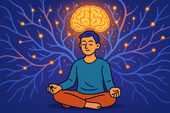
How Neuroplasticity Supports Emotional Growth: Rewiring the Brain for Resilience
Neuroplasticity is the brain’s built-in power to grow, adapt, and heal — and it’s the foundation of emotional transformation. Every mindful breath, compassionate act, or reframed thought strengthens new neural pathways that support resilience and self-awareness. Learn how your brain rewires through daily habits, helping you turn emotional challenges into opportunities for growth and calm. 🌿
-
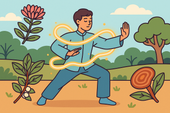
Tai Chi and Adaptogens for Mind-Body Balance: The Art of Harmonizing Energy and Resilience
Alchemy isn’t just an ancient science — it’s a timeless symbol of transformation and inner balance. By blending the physical and spiritual, alchemy teaches us that change begins from within. Just as metals are refined into gold, we too can transmute emotional pain, stress, and chaos into clarity and strength through mindful practice and self-awareness. 🌙✨
-

Cold Therapy and Emotional Control: Training the Mind Through the Body
Cold therapy isn’t just for athletes — it’s a tool for emotional mastery. By exposing your body to controlled cold, you train your nervous system to stay calm under stress, improving focus, mood, and resilience. This article explores the science of cold exposure, its impact on hormones and the vagus nerve, and how ice baths and cold showers can help you build emotional control, one breath at a time. 🧊🧘♂️
-

How Music Influences Emotional Recovery: The Healing Soundtrack of the Mind
Neuroplasticity — the brain’s ability to rewire and heal itself — is at the heart of emotional recovery. Through mindful habits, music, therapy, and consistent mental stimulation, your brain can form new connections that support resilience and well-being. Discover how neuroplasticity turns pain into growth, helping you rebuild balance, focus, and emotional strength. 🌿
-

Nature Therapy for Building Resilience: Reconnecting With the Healing Power of the Earth
Nature therapy helps rebuild emotional resilience by reconnecting you with the healing rhythms of the Earth. From forest walks to sunlight exposure, nature restores balance to your nervous system, lowers stress hormones, and teaches emotional adaptability. Learn how spending time outdoors can enhance mental clarity, calm anxiety, and awaken your natural capacity to heal. 🌞
-
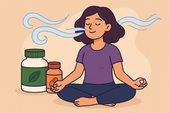
Breathwork Techniques That Pair with Supplements: The Ultimate Synergy for Stress Relief and Mental Clarity
Breathwork and supplements create a powerful mind-body synergy for stress relief, focus, and energy. By combining intentional breathing with adaptogens, nootropics, and calming nutrients, you can naturally regulate cortisol, sharpen mental clarity, and boost emotional balance. This guide explores the best breathwork techniques and supplement pairings to help you feel centered, calm, and energized from the inside out. 🌿

















































